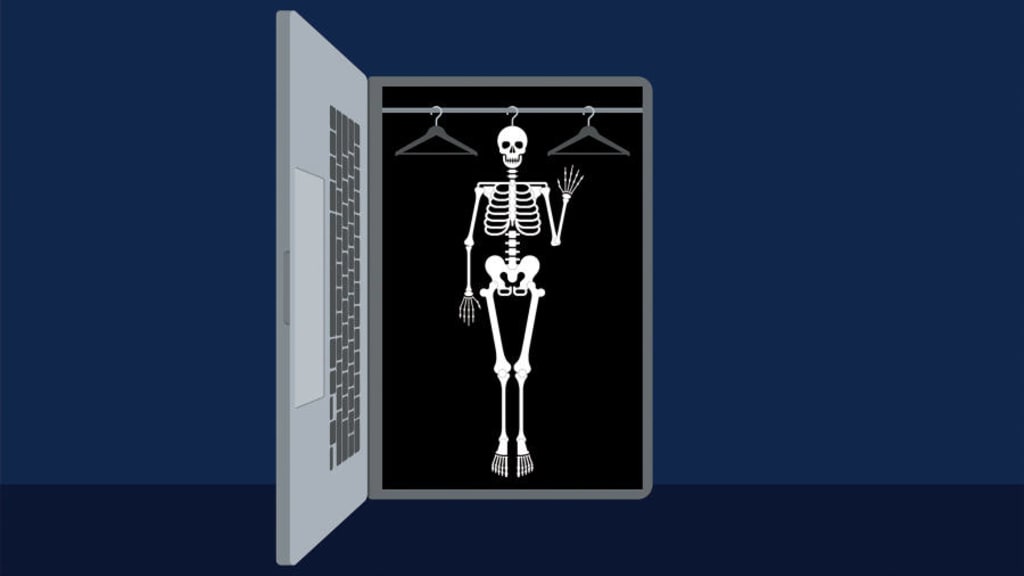Content warning
This story may contain sensitive material or discuss topics that some readers may find distressing. Reader discretion is advised. The views and opinions expressed in this story are those of the author and do not necessarily reflect the official policy or position of Vocal.
Are Cell Phones Mutating the Shape of Our Bones?
The Impact of Modern Technology on Skeletal Health: A Critical Analysis

In recent times, a surprising topic has captured media attention - the potential for cellphones and tablets to induce significant and lasting changes in our bodies, particularly our skeletal structure. This concern has emerged from a scientific report indicating that the use of mobile devices may lead to unexpected alterations in our anatomy. Spearheading this investigation are David Shahar and Mark Sayers, experts in biomechanics from the University of the Sunshine Coast in Australia. Biomechanics, a field focused on applying mechanical principles to living organisms, sheds light on how our bodies adapt to various activities, from human locomotion to insect flight.
Shahar and Sayers's study delves into osteobiography, a method used to glean insights into an individual's lifestyle based on their skeletal remains. It has long been understood that bones serve as a record of a person's activities and habits. For instance, the discovery of unusually robust skeletons on the Pacific island of Tinian in 1924 was attributed to the inhabitants' engagement in heavy labor, leading to the natural development of larger bones in response to their physical exertions. Similarly, Shahar and Sayers propose that modern technology, particularly the use of phones and tablets, is shaping the skeletal structure of today's youth.
At the heart of their research lies the concept of the External Occipital Protuberance (EOP), a bony growth located at the back of the skull. This protrusion, connected to the nuchal ligament, functions akin to an anchor, influencing posture and neck muscle dynamics. By analyzing X-rays obtained from chiropractic clinics, Shahar and Sayers observed a prevalence of EOP enlargement, especially among younger individuals. They hypothesized that prolonged periods of screen time, during which individuals habitually crane their necks forward while using devices, contribute to this phenomenon, termed "text neck." The constant forward flexion places additional strain on the nuchal ligament, prompting gradual elongation of the EOP over time.
Moreover, their findings revealed a gender disparity, with males exhibiting a higher likelihood of developing enlarged EOPs compared to females. While this observation raised concerns about the potential health implications of technological reliance, it also sparked debate within the scientific community. Critics of Shahar and Sayers's study argue that it lacks conclusive evidence and caution against drawing premature conclusions. They point out that elongated skull bones, such as the EOP, are not unprecedented and are often more prevalent in males, as noted by archaeologists.
Despite the skepticism surrounding Shahar and Sayers's findings, the broader issue of technology's impact on human physiology cannot be ignored. The pervasive use of mobile devices in contemporary society raises questions about the long-term consequences of our digital habits. Terms like "text thumb" or thumb arthritis highlight the physical toll of excessive device usage, reminiscent of ailments like carpal tunnel syndrome. While the notion of individuals sprouting horns or spikes from their skulls may sound sensationalistic, it underscores the need for further research into the effects of modern technology on our bodies.
Ultimately, the debate surrounding the potential skeletal changes induced by cellphone use underscores the intricate relationship between humans and technology. As we navigate an increasingly digitized world, it is imperative to strike a balance between technological advancement and physical well-being. Perhaps, as we reflect on the archaeological remnants of our era, future generations will shed light on the true impact of technology on the human body, dispelling myths and revealing truths about our evolutionary journey.
In the quest to understand the effects of modern technology on skeletal health, ongoing research by experts like Shahar and Sayers underscores the importance of balanced digital habits. The evolving relationship between humans and technology awaits further exploration and interpretation.
About the Creator
Gunduz
Explore captivating tales and thought-provoking perspectives. Join me for an enlightening journey through imagination and insight.
Contact:
Instagram: gunduz.asadli
Enjoyed the story? Support the Creator.
Subscribe for free to receive all their stories in your feed. You could also pledge your support or give them a one-off tip, letting them know you appreciate their work.






Comments
There are no comments for this story
Be the first to respond and start the conversation.